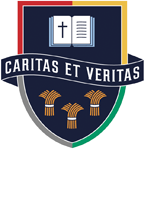Computing
Computers are incredibly fast, accurate, and stupid: humans are incredibly slow, inaccurate and brilliant; together they are powerful beyond imagination.
Albert Einstein
Intent
Computing at Hartford Church of England High School will equip students with the knowledge and skills so they know how to participate in a rapidly-changing digital world through challenging and engaging topics. We recognise that students need a vast arsenal of knowledge and skills for the modern world. Computing is the key to this. We are committed to developing student’ digital literacy, computing competency and exposing them to high level coding and IT skills to prepare them to lead happy and successful lives. Computing skills are a major factor in enabling children to be confident, creative and independent learners and it is our intention that children have every opportunity available to allow them to achieve this.
All students in computing will know the fundamental principles of computing at Key Stage 3 by studying computer science (how programming and understanding how digital systems work), information technology (how computer systems to store, retrieve and send information) and digital literacy (evaluating digital content and using technology safely and respectfully).
Design Rationale
The Computing scheme of work covered at Hartford Church of England High School follows the National curriculum. In Key Stage 3, students begin with digital literacy, before progressing to computer science topics such as hardware, software and programming. This journey continues with the solving of different problems, using various software applications. Students are also taught computing etiquette and how to stay safe online. Students will have built up their knowledge so they may choose to study either Computer Science, IT or Business.
Delivery
Students have two lessons of computing a fortnight at Hartford Church of England High School. Each lesson begins with a knowledge or skills retrieval task in order to build up confidence and to retain information. We always model outcomes to the students, as we practise new learning together, followed by questioning to evaluate understanding.
Students are then expected to independently apply the skills and tools learned to their own problems. Students receive verbal and written feedback and are expected to respond to this feedback and make amendments to work as necessary. This is vital in enabling us to identify areas where the students need further support. As IT constantly changes, we are always seeking new ways of delivery and new online platforms to support learning.
Impact
To track progress, we follow a three-layered assessment structure.
High Stake Testing
High quality summative assessments (twice or three times a year) interleave knowledge and skills to support students in developing long-term memory. Stand-alone lessons ensure that students reflect and respond to teacher feedback.
Mid Stake Testing
Typically purposeful practice tasks completed independently in lessons at least twice per half-term. These tasks are used to identify learning gaps prior to high stake testing. Students receive personalised written feedback to which they respond in lessons.
Low Stake Testing
To embed knowledge in long-term memory, every lesson starts with students quizzed on prior knowledge (Do Now Tasks). Student performance is then used effectively by teachers to identify misconceptions and plan accordingly to narrow knowledge gaps.
Knowledge Organisers
-
Year 7 IT Knowledge Organiser
download_for_offline
download_for_offlineYear 7 IT Knowledge Organiser
- Year 8 IT Knowledge Organiser download_for_offline
download_for_offlineYear 8 IT Knowledge Organiser
- Year 9 IT Knowledge Organiser download_for_offline
download_for_offlineYear 9 IT Knowledge Organiser
- Year 10 and 11 Business Studies Knowledge Organiser download_for_offline
download_for_offlineYear 10 and 11 Business Studies Knowledge Organiser
- Year 10 and 11 Computer Science Knowledge Organiser download_for_offline
download_for_offlineYear 10 and 11 Computer Science Knowledge Organiser
- Year 10 and 11 IT Knowledge Organiser download_for_offline
download_for_offlineYear 10 and 11 IT Knowledge Organiser
Long Term Plans
-
Year 7 Computing Long Term Plan
download_for_offline
download_for_offlineYear 7 Computing Long Term Plan
- Year 8 Computing Long Term Plan download_for_offline
download_for_offlineYear 8 Computing Long Term Plan
- Year 9 Computing Long Term Plan download_for_offline
↑download_for_offlineYear 9 Computing Long Term Plan
GCSE Business Studies
-
Year 10 and 11 Business Studies Long Term Plan
download_for_offline
download_for_offlineYear 10 and 11 Business Studies Long Term Plan
GCSE Computer Science
-
Year 10 and 11 Computer Science Long Term Plan
download_for_offline
download_for_offlineYear 10 and 11 Computer Science Long Term Plan
GCSE IT
-
Year 10 and 11 IT Long Term Plan
download_for_offline
download_for_offlineYear 10 and 11 IT Long Term Plan
-
Year 10 and 11 IT Long Term Plan
download_for_offline
-
Year 10 and 11 Computer Science Long Term Plan
download_for_offline
- Year 8 Computing Long Term Plan download_for_offline
- Year 8 IT Knowledge Organiser download_for_offline

